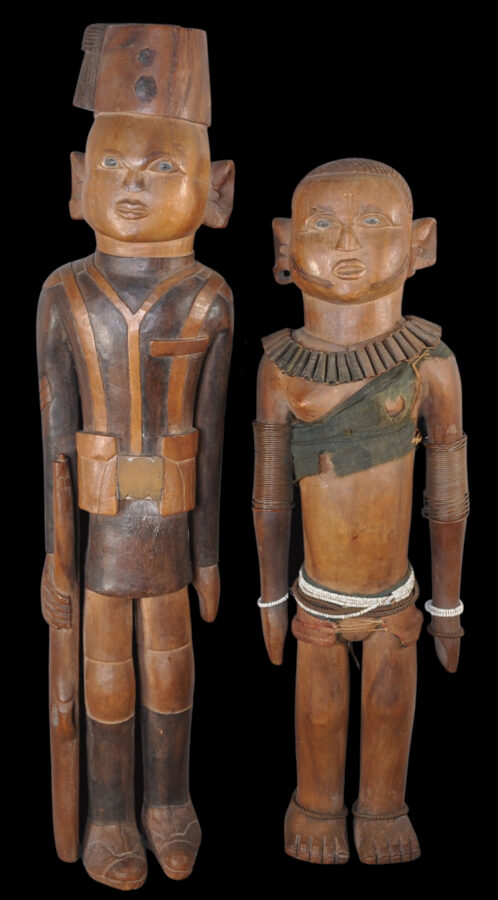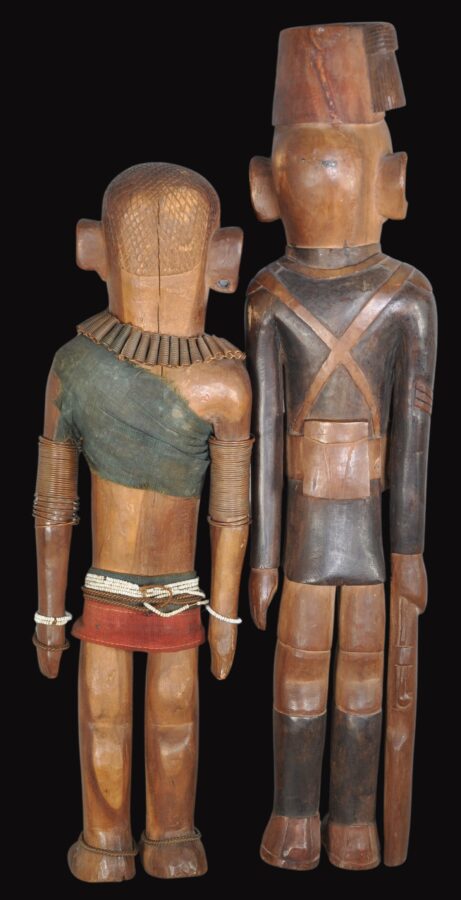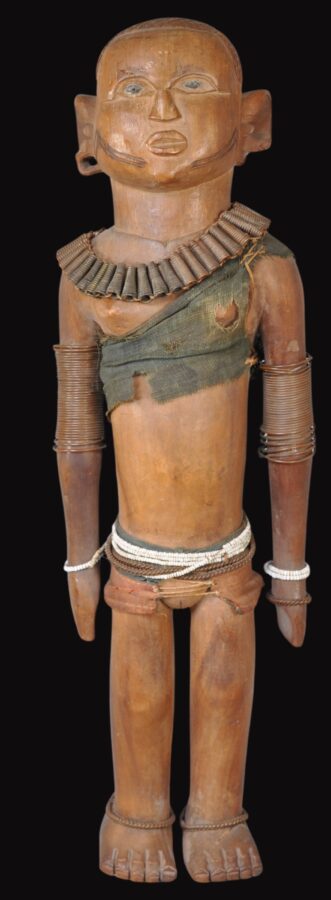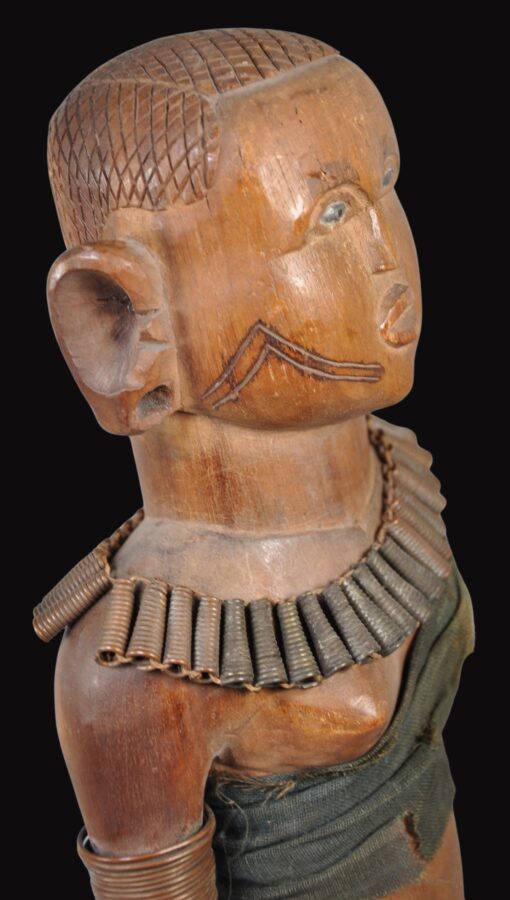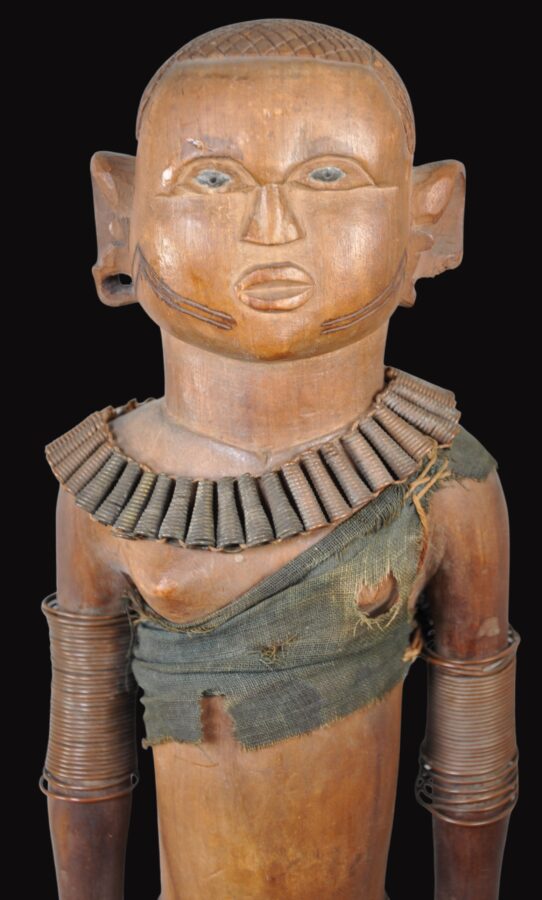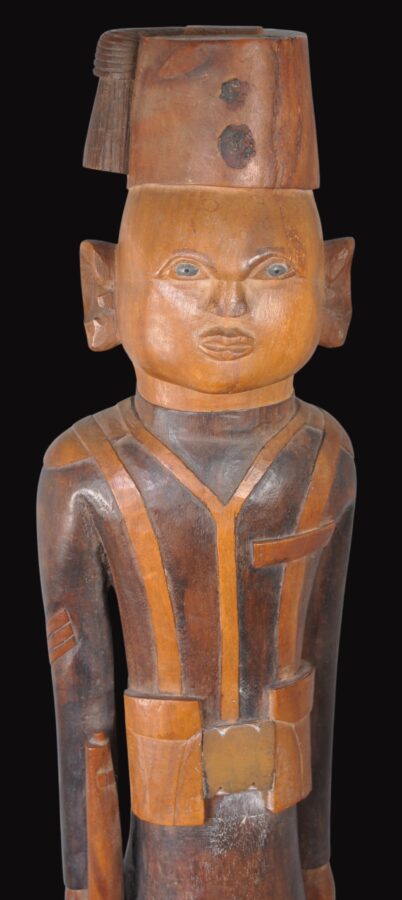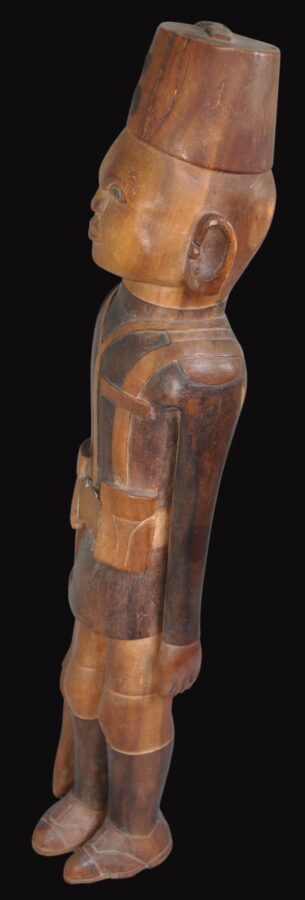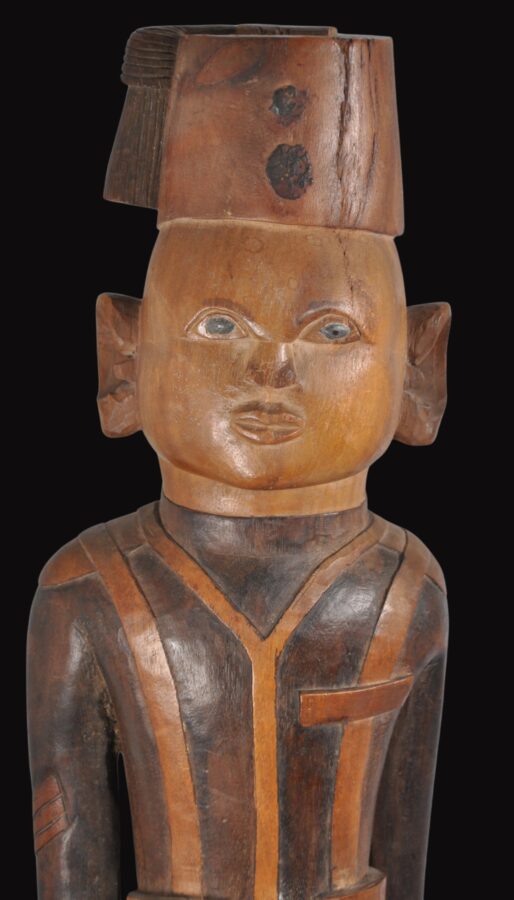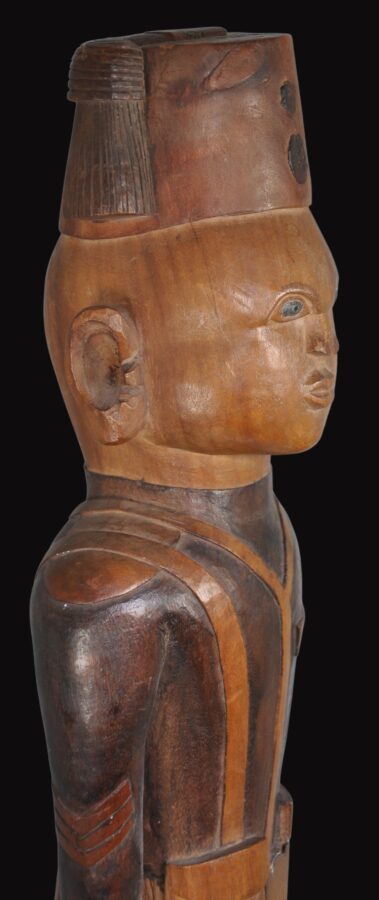Enquiry about object: 9351
Pair of Kamba Carved Wooden Figures
Kamba People, Kenya circa 1920
height: (male) 49.3cm, (female) 42cm, combined weight: 1,974g
Provenance
UK art market
This pair of images represents an askari or a local soldier working in the colonial military service, and a local woman. (Ascari is from the Arabic and also Somali and Swahili meaning ‘soldier’ or ‘military’, and also ‘police’ in Somali).
Such carvings by Kamba woodcarvers in Kenya were made as mementos for local colonial administrators. The traditional lands of the Kamba are southeast of Nairobi.
The pair here have been coloured with dark staining to alternate with the natural colour of the wood. This decoration has been further augmented with copious beadwork, wire-work and textile decoration in respect of the female figure, who otherwise is scantily dressed. The ascari wears a soldier’s imform, has a fez-like hat and a long rifle.
The first such figurative carvings can be traced back to just one artist, Mutisya Munge, a Kamba tribesman, who first started to carve such figures to sell to local Europeans around 1914 (Stevenson & Stewart, 2003, 72). He was himself an ascari. Others then produced such images.
The pair here, though not signed by Mutisya Munge, is very much in his style. The askari figure is in fine condition. The female image has some loss to the lower lobe of one ear and to the tip of the left breast.
References
Robbins, W. M. & N. I. Nooter, African Art in American Collections, Smithsonian Institution Press, 1989.
Stevenson, M. & M. G. Stewart, The Mlungu in Africa: Art from the Colonial Period, 1840-1940, Michael Stevenson Contemporary, 2003.


